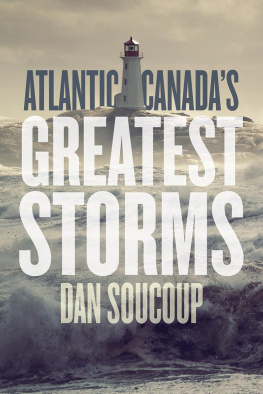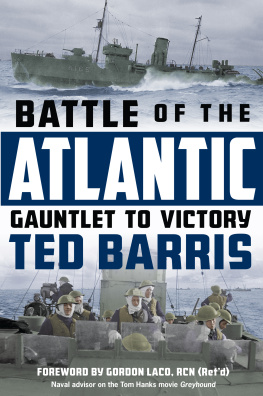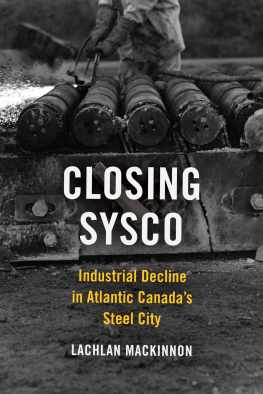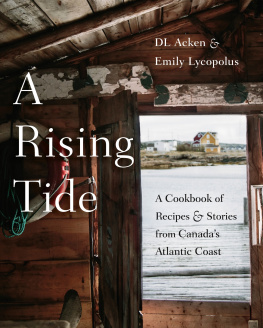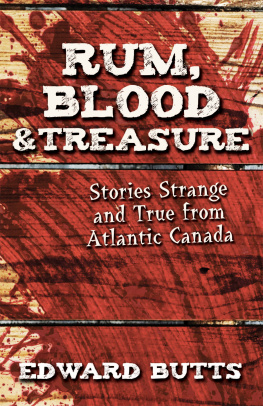Copyright 2019, Dan Soucoup
All rights reserved. No part of this book may be reproduced, stored in a retrieval system or transmitted in any form or by any means without the prior written permission from the publisher, or, in the case of photocopying or other reprographic copying, permission from Access Copyright, 1 Yonge Street, Suite 1900, Toronto, Ontario M5E 1E5.
Nimbus Publishing Limited
3660 Strawberry Hill Street, Halifax, NS, B3K 5A9
(902) 455-4286 nimbus.ca
Printed and bound in Canada
NB1438
Design: John van der Woude, JVDW Designs
Editor: Angela Mombourquette
Library and Archives Canada Cataloguing in Publication
Title: Atlantic Canadas greatest storms / Dan Soucoup.
Names: Soucoup, Dan, 1949- author.
Identifiers: Canadiana 20190158247 | ISBN 9781771087711 (softcover)
Subjects: LCSH: StormsAtlantic ProvincesHistory.
Classification: LCC QC959.A85 S68 2019 | DDC 551.5509715dc23
Nimbus Publishing acknowledges the financial support for its publishing activities from the Government of Canada, the Canada Council for the Arts, and from the Province of Nova Scotia. We are pleased to work in partnership with the Province of Nova Scotia to develop and promote our creative industries for the benefit of all Nova Scotians.
Introduction
Over the years, winter blizzards, floods, and even tornadoes have created havoc in Atlantic Canada, but by far the worst natural disasters have been hurricanes. In fact, the word itself suggests pending doom, coming from the Spanish huracn, which was, in turn, derived from a Carib diety, Juracn, whom the Tano people said was a bringer of chaos and disorder.
The typical hurricane comes to Canadas east coast between June and November after spawning in either the Gulf of Mexico, the Caribbean Sea, or, more often, the Atlantic Ocean. Yet the origins of most hurricanes are actually cloaked in sand and dry winds half a world away, when hot air from the Sahara blows over Western Africa and mixes with the moist air over the Atlantic. These low-pressure systems can develop into tropical depressions in the doldrums around the Cape Verde Islands. The equatorial sun warms the ocean, and this hot, humid air rises and then cools. As air pressure drops at the oceans surface, winds come in to replace the vacuum from the escaping air. These conditionswarm water and hot air with cool air above, plus persistent windsare ripe for the birth of a hurricane; they have been described as having the effect of unleashing trapped boiling water.
Trade winds generally blow westward towards the Caribbean Sea, and in the northern hemisphere, the winds rotate in a counterclockwise fashion as the burgeoning storm churns west and then northward. But only a small number of weather systems that begin to develop this way turn into full-fledged hurricanes. Some cyclones die out before being organized, while others only develop into tropical depressions (winds below 63 kmh) or tropical storms (below 119 kmh.) Once tropical storms reach 117 kmh, they are named (since 1953, with human names) according to a list provided by the World Meteorological Organization. Of those named, only a small number end up as hurricanes.
But while tropical storms and hurricanes usually travel in familiar patterns, they are never fully predicable, and, in fact, some of the largest storms on recordsuch as the Galveston Hurricane and the Perfect Stormhave surprised weather experts. These storms ended up going in unexpected directions before intensifying and becoming increasingly destructive. But most big storms that charge up the Atlantic turn northeastward, in the classic c- shape, then lose their momentum as they hit the colder waters of the North Atlantic.
Some storms coming north can transition into what meteorologists call extratropical storms. These different kinds of storms have become more common in the twenty-first century, and can, in fact, be the most dangerous of all the cyclones entering northern latitudes. Some of these extratropical cyclones have cold, rather than warm, air at their centres, and are able to generate energy by combining with a warm system nearby. Both the Perfect Storm of 1991which produced thirty-metre waves, sinking the Andrea Gailand the Superstorm in 1993 were extratropical systems that had transitioned into hybrid storms that packed incredible vitality and destructive energy.
Hurricane Facts
Tropical disturbances in the Atlantic Ocean usually begin as tropical depressions, but once they reach sustained winds of 63 kmh, they become tropical storms. After reaching 117 kmh, the storm receives an official name, and in reaching sustained winds of 119 kmh, the storm becomes a Category 1 hurricane.
The Saffir-Simpson Hurricane Wind Scale was originally established by wind engineer Herb Saffir and meteorologist Bob Simpson, and is essentially an extension of the old British Navy Beaufort scale, which measures sustained winds. Heres how the categories break down:
Category 1: winds from 119153 kmh
Category 2: winds from 154177 kmh
Category 3: winds from 178208 kmh
Category 4: winds from 209251 kmh
Category 5: winds from 252 kmh and higher
Once a hurricane is declared, the types of damage can vary, but all categories are very dangerous. Storms that are classified as Category 3 and higher can be especially devastating and can include considerable loss of life and catastrophic damage.
It can be argued that Atlantic Canadas location in the cold waters of the high latitudes has been its saving grace, since many massive hurricanes have wilted into tropical rainstorms before making landfall. But this has not always been the case. In fact, Canadas east coast is situated at the very top of the eastern seaboard, and tropical storms fuelled by the warm waters of the Gulf Stream can deliver an explosive blow, especially if waters around Sable Island and the Gulf of Maine are warmer than normal.
Late-summer hurricanes have historically been called August Gales in Atlantic Canada, ever since the arrival of the Great August Gale of 1873. But these large systems can appear throughout the hurricane season, as did the more recent hurricanes, Juan and Igor, which both struck in late September. And while only two to three per year make any sort of entry into Atlantic Canada, the greatest threat is to mariners who are caught in open water. On land, flooding from the incredible amounts of rain dropped by hurricanes is also a great concern for emergency-measures organizations.
While much of the physical damage caused by storms has occurred on land, the Atlantic Oceanor more specifically, the North Atlanticlooms large in this book. In this grey, roaring body of water, extreme wave heights are legendary and measure among the highest on the planet. Monster waves, some reaching towards thirty metres, have been measured recently by the World Meteorological Organizationand these waves seem to be occurring more often and with much more energy, packing incredible destructive power. Since 2000, some of the biggest hurricanes on record, such as hurricanes Juan and Igor, have entered the North Atlantic waters. And while the question of whether, or how much, the oceans are changing and adding more energy into their systems is open to debate, new extremes are almost certainly being reached.



